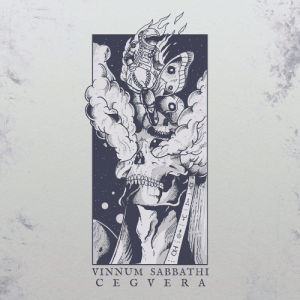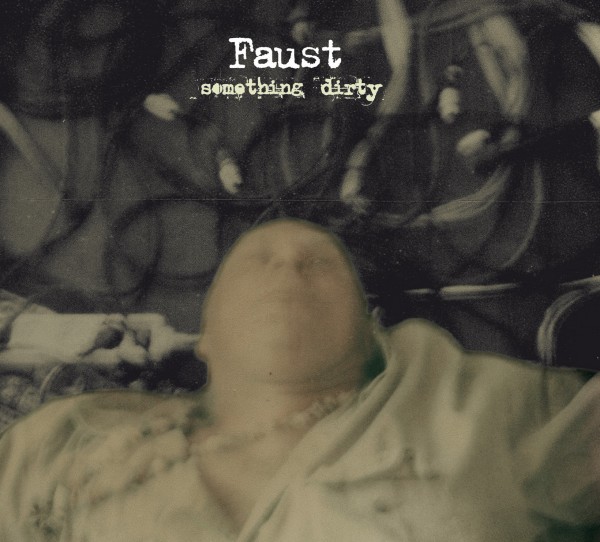 Doom now covers so many differing styles of heavy music that it encompasses a multitude of different bands. There are those who faithfully tread the path of Sabbath, those that make monolithic noise and those that take more of their ideas from the sounds of bands from the sixties. This split release is by two bands both trying to outdo each other on an epic scale, writ large in trance-inducing riffs.
Doom now covers so many differing styles of heavy music that it encompasses a multitude of different bands. There are those who faithfully tread the path of Sabbath, those that make monolithic noise and those that take more of their ideas from the sounds of bands from the sixties. This split release is by two bands both trying to outdo each other on an epic scale, writ large in trance-inducing riffs.
Vinnum Sabbathi’s “Hex V111: The Malthusian Spectre” begins with hanging garden organ chords while the guitar plays a haunting three-note chordal progression. A voiceover talks about the Mariner 9 space probe to Mars in the 1970s and what it potentially found there. Rolling drums pile in while the main riff hangs in the air, like the space shuttle itself orbiting the dead planet. Then the guitar picks up pace and we are into straight-ahead doom territory as wah-wah smashing menace battles it out with the rolling bass line.
It’s a mighty, hefty slab of big sonic metal that crawls under the skin and lives there like some alien being. “Intermission (The Good Earth Is Dying)” shows a softer side to Vinnum and touches more on early seventies Pink Floyd than it does the hallowed halls of doom. But this brief track serves as a meeting place for the two bands as the dying embers segue into Cegvera’s first track. I’ve never heard of Cegvera before, so this cosmic ride was going to be an interesting one. Lilting guitar introduces “Arrival/Colonia”, giving it a slight prog rock kind of feel before a melodic piece of guitar crashes in with the drums. This kind of reminds me of a heavier version of Sienna Root. The drum break takes on a tribal sound as an interlude into kick-starting the main riff. The big bass thud charges full steam ahead against the guitar, but the overall sound seems to be a bit more stoner, one that mashes with some of Earthless’s heavy psych sound.“Depletion/Overshoot” starts with a scatter drum pattern that a guitar gently picks notes out over the top, which reminds me of some of Electric Moon‘s live performances. In fact, the guitar plays a beautiful melody over some blues-oriented strumming until we hit the big paydirt riff. The track then spirals off into some Floyd-sounding state of consciousness before the next barrage of sound. Atmospheric guitar introduces “Collapse/Aftermath”, with notes that chime like bells over a steady drum beat. This slowly builds into an urgent chord sequence that sounds like a rocket in distress. It’s here that I hear more of an influence of the late sixties’ pioneering space bands before the final salvage of riff fire on the track’s exit.
At a only thirty-three minutes long, this feels more like a mini LP more than anything (and yes, I know that tons of original vinyl albums from the 1960s and ’70s don’t last much longer), and in a strange way I wish there was more of it. There feels like a narrative going on here that gets cut short and seems like it could be expanded on more. But in the end you get some fantastic tracks that certainly make you ponder the universe’s big mysteries while the record spins.-Gary Parsons-



